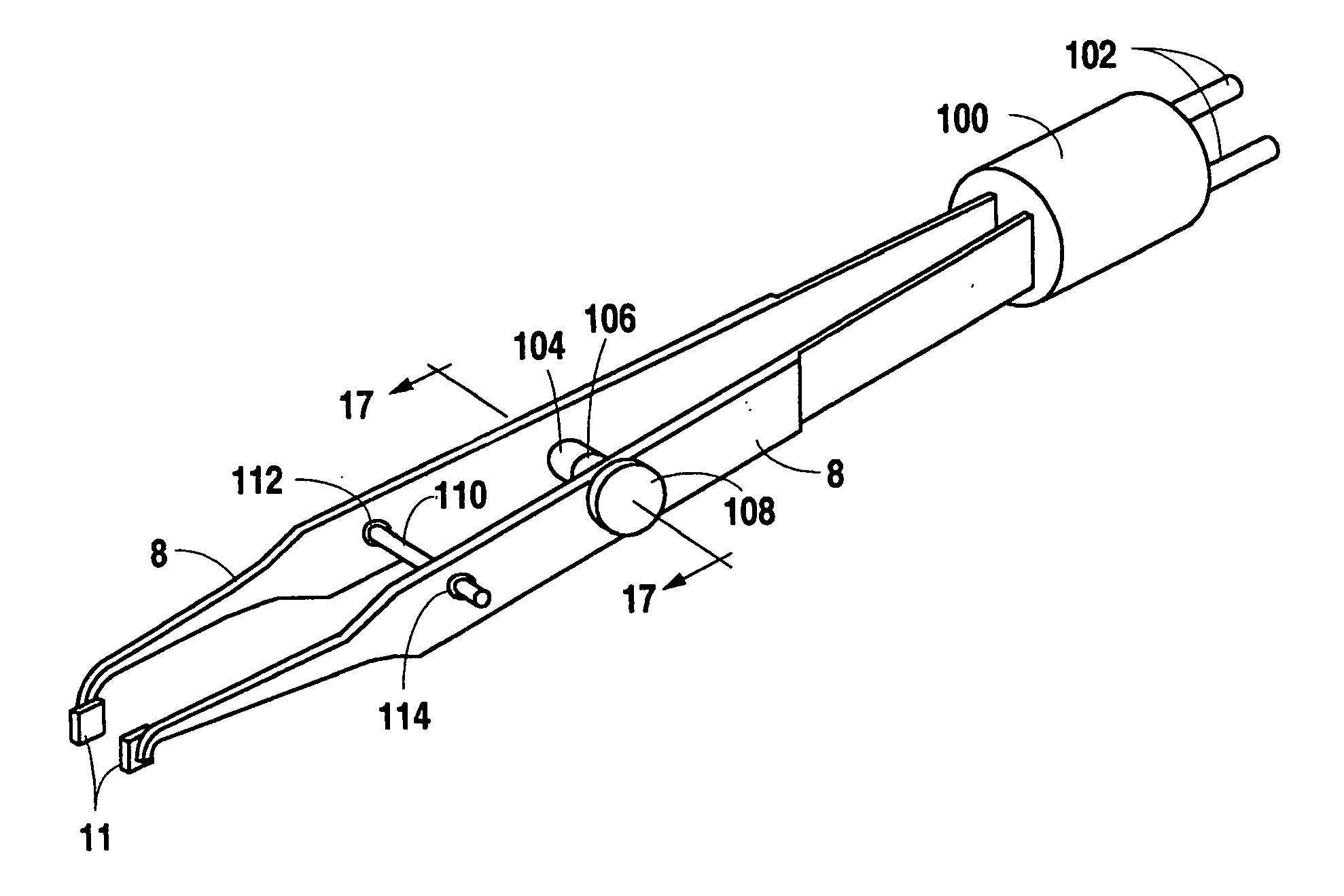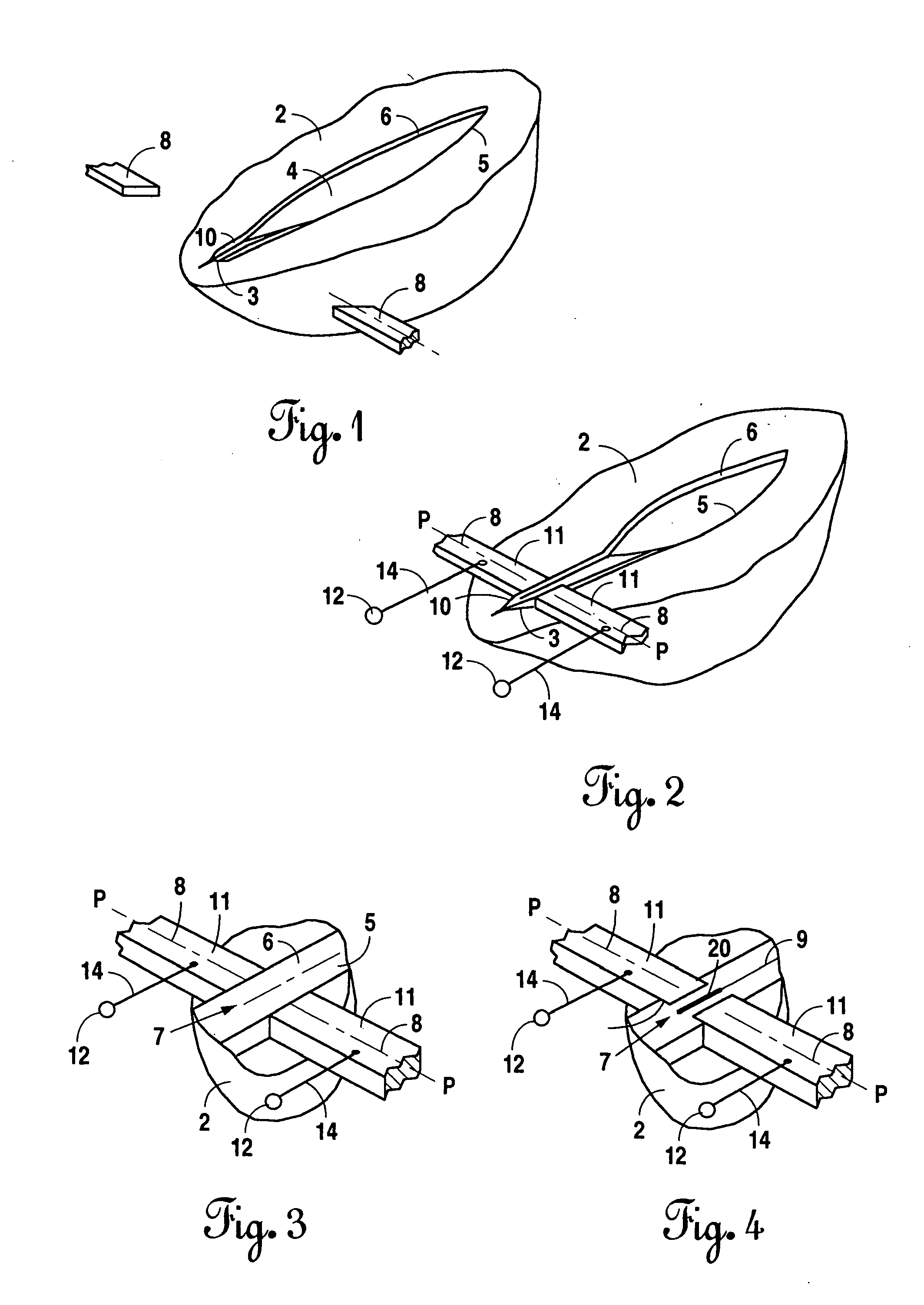Bonding of soft biological tissues by passing high frequency electric current therethrough
a technology of electric current and soft tissue, applied in the field of high frequency heating of soft biological tissues, can solve the problems of delayed healing and/or inflammation, allergic reactions, limited applicability, etc., and achieve the effects of promoting fast healing, accurate control of the degree of coagulation, and fast and reliable closing of incisions
- Summary
- Abstract
- Description
- Claims
- Application Information
AI Technical Summary
Benefits of technology
Problems solved by technology
Method used
Image
Examples
Embodiment Construction
[0042]FIG. 1 shows tissue 2 with an incision 4 formed therein. Incision 4 could have been formed as part of some surgery done on a patient, or it could be an injury due to some type of trauma. The incision can be a cut in the skin or in a wall of an organ, or the organ itself, e.g. a blood vessel or nerve. In any case, the incision must be closed by bonding, or joining, the edges of tissue 5 and 6 on either side of the incision to each other.
[0043] In accordance with the present invention, the edges 5, 6 at end 3 of the incision are gripped and raised by pincers (not shown) to form tissue portion 10 in the form of a flange. This is depicted in FIG. 1. A forceps tool (referred to herein as a forceps) is provided in the form of any instrument capable of gripping the tissue and selectively adding a clamping force under manual control. Various forceps designs are well known. Typically they include a pair of arms with opposed ends between which the tissue can be gripped. Forceps arrange...
PUM
 Login to View More
Login to View More Abstract
Description
Claims
Application Information
 Login to View More
Login to View More - R&D
- Intellectual Property
- Life Sciences
- Materials
- Tech Scout
- Unparalleled Data Quality
- Higher Quality Content
- 60% Fewer Hallucinations
Browse by: Latest US Patents, China's latest patents, Technical Efficacy Thesaurus, Application Domain, Technology Topic, Popular Technical Reports.
© 2025 PatSnap. All rights reserved.Legal|Privacy policy|Modern Slavery Act Transparency Statement|Sitemap|About US| Contact US: help@patsnap.com



